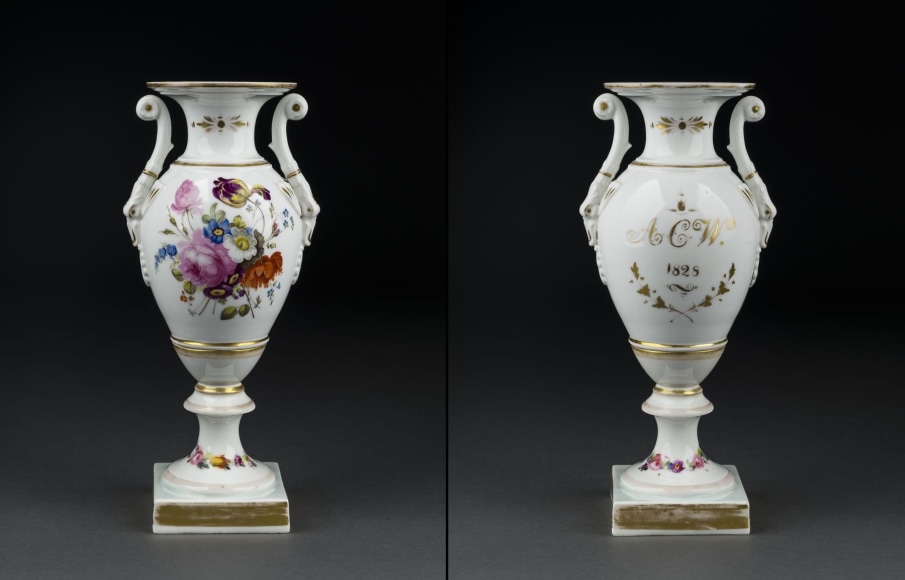The Andrew Craig Walker Urn in the Empire Taste,1828
Tucker Factories, Philadelphia, Pennsylvania (active 1826–38)
Porcelain, partially painted and gilded, with iron tie-rod for assembly
10 11/16 in. high
Inscribed and dated (on the back): ACW. / 1828; (on label, with typewriter, on the bottom): Anonymous / 2 – 52; (on label, on the bottom): PMA / Stout [?] / 5 [or S]; (on label, on the bottom): 1968 / 36A; (on label, on the bottom): 8850
Like American cabinetmakers of the Neo-Classical period, who looked to English and French designs for inspiration, so did the Tucker Factories, active under several different names between 1826 and 1838, look to the ceramics being produced in England and France for the forms and decoration of the wares that they produced. Tucker made a wide variety of forms, from the most utilitarian to the highly decorative.
Within the latter category would fall the present vase, which follows a form which came into favor in the Empire period in France and continued to be made into the Restauration period in the 1820s. Like its French prototypes, the vase is ornamented with handles decorated with winged female figures. And on one side a complex bouquet of flowers mimics a popular form of decoration on pieces of “Old Paris” porcelain, while on the other side are the date 1828 and the initials “A. C. W.”
Within the literature on the Tucker Factories, other than the names of principals William Ellis Tucker and other Tuckers and his sometime partners Thomas Hulme and Joseph Hempill, no name appears more frequently than that of Andrew Craig Walker, whose incised initial “W” appears on the bottom of many pieces from the Tucker Factories, and whose name is further remembered as the result of an inscription in the Tucker pattern book at the Philadelphia Museum of Art identifying a certain design of picture as “Walker shape.” Walker was an important modeler at the Tucker Factories; indeed, early historian of American ceramics, Edwin AtLee Barber, wrote in his landmark The Pottery and Porcelain of the United States (1893) that Walker was “one of the best hands employed in moulding the finer pitchers” (p. 152) at the Tucker Factories.
The present vase is important because it was clearly made for or by Andrew Craig Walker, whose initials appear on the back, but also because it is dated. But for a very small number of pieces that bear the names of one of Tucker’s short-lived partnerships, dated or specifically datable pieces are extremely rare. That this piece dates from but two years into the Tucker enterprise, suggests that even their early work was quite sophisticated in its emulation of fine French porcelain.

